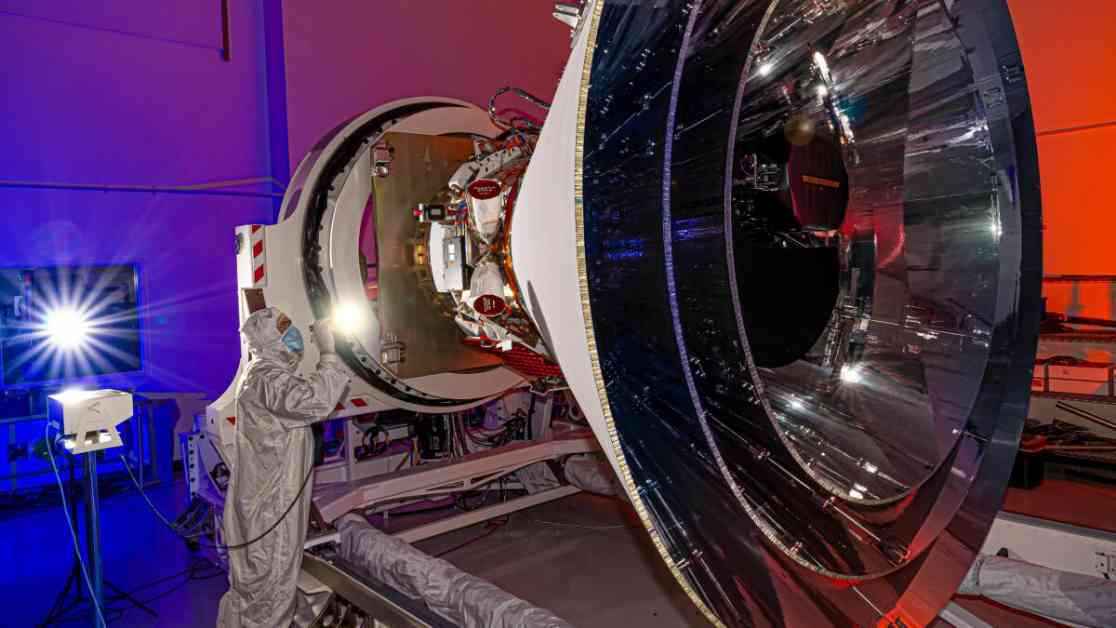Before there was light, before life on Earth, before the galaxies, and even before the Big Bang, our universe experienced a period of rapid expansion known as cosmic inflation. This exotic state saw the universe expanding exponentially at an unimaginable rate, transforming a space the size of an atom into something larger than our solar system in a minuscule fraction of a second. The reasons behind this inflation remain a mystery, but a new space mission launched by NASA’s Jet Propulsion Laboratory (JPL) aims to shed light on this cosmic enigma.
The Spectro-Photometer for the History of the Universe, Epoch of Reionization and Ices Explorer (SPHEREx) is set to embark on a groundbreaking exploration, launching from Vandenberg Space Force Base near Lompoc. The mission seeks to uncover clues left behind by inflation and provide insights into the forces that drove this rapid expansion. Over the course of two years, SPHEREx will map the distribution of galaxies across the sky to search for quantum ripples generated by inflation particles over 13.8 billion years ago.
James Bock, a physics professor at Caltech and the principal investigator of SPHEREx, describes the mission as a cosmic zoom-out, offering a panoramic view of the universe’s largest structures. Unlike telescopes that focus on detailed images of specific areas, SPHEREx will capture the big picture, unveiling the secrets of inflation and its impact on the universe’s evolution.
While the concept of inflation is widely accepted in the scientific community, its origins and mechanisms remain elusive. Theories surrounding inflation vary, but they all share a common narrative of an explosive expansion that shaped the universe as we know it. SPHEREx aims to unravel the complexities of inflation by examining the remnants of this cosmic event and deciphering the quantum fluctuations that set the stage for the formation of galaxies and celestial bodies.
One of the key questions that SPHEREx hopes to answer is whether inflation was triggered by a single energy field or multiple interacting fields. By analyzing the patterns of galactic distribution, scientists can discern the underlying physics of inflation and determine the nature of the energy fluctuations that birthed the universe we inhabit today.
The spacecraft’s unique vantage point in space will enable it to observe the entire sky without interference, providing unprecedented insights into the cosmic tapestry. Operating at frigid temperatures of minus 350 degrees Fahrenheit, SPHEREx’s infrared sensors will capture elusive signals emitted by distant galaxies, bypassing the interference caused by Earth’s heat radiation.
In addition to unraveling the mysteries of inflation, SPHEREx will investigate the formation of early galaxies and the distribution of cosmic dust across the universe. By studying these cosmic phenomena, scientists hope to gain a deeper understanding of the processes that shaped our cosmic landscape and laid the foundation for life as we know it.
As SPHEREx embarks on its ambitious mission to explore the origins of the universe, it stands as a testament to human curiosity and the relentless pursuit of knowledge. By venturing into the depths of space, this spacecraft symbolizes our collective quest to unlock the secrets of the cosmos and unravel the mysteries that have fascinated humanity for centuries. Through its groundbreaking discoveries, SPHEREx will pave the way for future generations to explore the vast expanse of the universe and uncover the hidden truths that lie beyond the stars.


